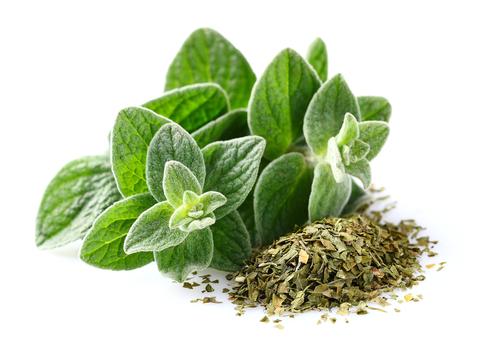Mastiha, the fragrant, creamy white resin of the mastic tree, grows in only one place in the world: the island of Chios, Greece.
I had my first encounter with the mastic tree was when I was give years old. I was living on the island of Psara, Greece, about 14 miles northwest of Chios. My cousin Theodora wanted to play “doctors,” and I was so excited that while running up the steps made of uneven rocks, I fell and broke my arm. I had to go to Chios with my grandmother to have my arm set in plaster, because this could not be done on Psara.
It was in Chios that I saw for the first time the mastic tree. I had never smelled anything as sweet and beautiful as mastiha. I recall asking my grandmother why the trees were crying. The resin on the trees looked like tear drops.
My grandmother and I brought back home mastiha and other herbs from Chios, which we used to make many delicious dishes. I still enjoy using mastiha in my cooking, and when doing so I remember the day in Chios when I discovered them.

Mastic trees in Chios, Greece. Shutterstock
Harvesting Mastiha
Mastiha, also known as mastic, has been harvested for at least 2,500 years. The mastic tree grows in other parts of Greece and the Mediterranean, but it only produces the resin spice in southern Chios.The hot, arid summers in the island’s mastihohória, or “mastic villages,” permit the mastiha to dry—a crucial process, because the resin spoils if it gets wet before it matures. Crushed marble is laid around the base of the trees so that when the resin falls, it does not get dirty with soil or leaves, or absorb any moisture and spoil.
The harvesting procedure, “kentima,” is performed during the summer from July to the beginning of October. The resin is collected by bleeding the trees: making small incisions, twice a week, to their trunks. This allows the crystal clear, liquid sap to drip onto the crushed marble below.
Small mastiha pieces, called “tears,” are gathered straight from the trunk. Larger pieces are gathered from the ground, formed from the accumulation of the many drops that fall on the same spot. After the mastiha is collected, it is washed by hand and set aside to dry, away from the sun. Once dried, it hardens and changes from that crystal clear color to an opaque, creamier off-white.
In 1997, the mastiha of Chios was assigned protection of designation of origin (PDO) by the European Union, allowing consumers around the world to buy quality-assured mastiha.

In the mastic villages of Chios, mastiha is harvested and cleaned by hand. Shutterstock
An Ancient Treasure
In Greek culture, legend tells that the mastic trees began to cry in sympathy when the Romans tortured a Christian martyr and left him to die in a mastic grove. It is said that this is how they started to produce the resin.The first mention of mastic tears, however, was by the ancient Greek physician Hippocrates, who lived centuries earlier. Herodotus, an ancient Greek historian, had also noted their behavior in the 5th century B.C.
In ancient Greece, mastiha was an expensive product that was beyond the reach of the ordinary citizen, available only to the privileged.
According to the Roman scholar Pliny the Younger, its price in the currency of the time was 10 denarii per libra, at a time when black pepper imported from India cost only four denarii; white pepper, seven; ginger, six; and cassia (a close relative of cinnamon), fifteen. Roman emperors used mastic along with honey, pepper, and egg to make conditum paradoxum, a spiced wine.
The mastic villages had an economy based on the cultivation of mastiha, and so they built fortresses to protect them and their valued spice from invasions. Mastiha’s value was also noted by the Ottoman Empire and the Germans. When the Ottoman Turks raided, enslaved, and occupied Greece in the mid-15th century, they too began to use mastiha in their dishes. The Turks were masters of Chios for four and a half centuries, and controlled the mastiha trade during this time. It is therefore not unusual to find this Greek spice in many Turkish dishes—including ice cream.
During World War II, when Chios was occupied by Germans and famine struck the island, the residents went to Turkey to negotiate a food-for-mastiha exchange. They closed a deal but it remained only on paper—the Germans then confiscated the mastiha earmarked for this purpose and sold it for their own profit.

Beads of liquid sap hang from the bark of the mastic tree like teardrops. Shutterstock
Miracle Sap
The mastiha from Chios has been revered since ancient times for both its distinctive aroma and its healing properties. It has antimicrobial, antioxidant, anti-inflammatory, anti-cancerous, wound regeneration, and therapeutic properties. It’s used as an ingredient in ointments for burns, and helps relieve skin conditions such as acne.According to a study by the University of Nottingham, published in the New England Journal of Medicine in 1998, even a minimal dose of mastiha can heal peptic ulcers (caused by bacteria) with its antimicrobial action; aid in detoxifying and stimulating the liver; and help reduce cholesterol, thereby reducing the risk of cardiovascular diseases.
Ancient Greek physicians like Hippocrates, Theophrastus, Dioscorides, and Galen all knew of mastiha’s healing properties.
Hippocrates mixed mastiha with honey to cure belly aches and colds, and also used it as a breath freshener. Dioscorides also recognized it as beneficial for digestion, stomach ailments, and dental hygiene. He described it as “good for disorders in the womb—gently warming, astringent, softening. It is also good laid on the stomach for hardened swellings, for the abdominal cavity and dysentery; and for cleaning away spots on the face, and causing a good color [facial masks].”
The ladies of Rome, meanwhile, used toothpicks made from mastic trees for their teeth-whitening properties.
Using Mastiha
Now, mastiha can be found in a variety of Greek products, including food; cosmetics and perfume; and health, hygiene, and dental products. It’s also used in the church, placed on top of the charcoal in an incense burner, for blessings.Pieces of mastiha can also be directly chewed as a gum. In fact, the word masticate, meaning “to chew,” is derived from the word mastiha. When chewing mastiha, it initially has a bitter taste, and then sweetens.
Used in cooking, the spice has a distinctive flavor: musky, woody, slightly piney, and incense-like. It can be paired with almost anything, from a rich tomato sauce, to white wine and lemon, to chocolate; it also combines well with other spices such as cardamom, cinnamon, and vanilla extract.
Mastiha can be found in Greek traditional cakes such as tsoureki, the sweet Greek Easter bread; and Vasilopita, the Greek New Year’s Day cake. Other culinary uses include in jams, tea, coffee, pasta, sauces, and liqueurs. It is also used a natural preservative for food.
The resin is sold as crystals, in pieces that look like creamy sea salt. Most seasoned chefs believe that it is better to buy mastiha whole and grind it yourself as you need it.
In order to prepare the mastiha for cooking purposes, the crystals need to be pounded with a mortar and pestle or spice grinder, but always with the addition of either a little salt (for savory foods) or a little sugar or flour (for sweets), to prevent it from sticking.
A little bit of mastic goes a long way. Store mastiha in an airtight container away from heat and light until you need it. You can purchase mastiha in Greek bakeries; specialty shops like Kalustyan’s and Sahadi Importing Company in New York City; and online at MastihaShopNY.com and Amazon. Whenever I travel to Greece, Chios is always on my list, so I can stock up on this treasured spice and experience the many dishes that the island makes with it.
RECIPE: Mastiha Bread
Maria Benardis is a Gourmand Award-winning author, chef, motivational speaker, intuitive health and wellness coach, and founder of Greekalicious.






